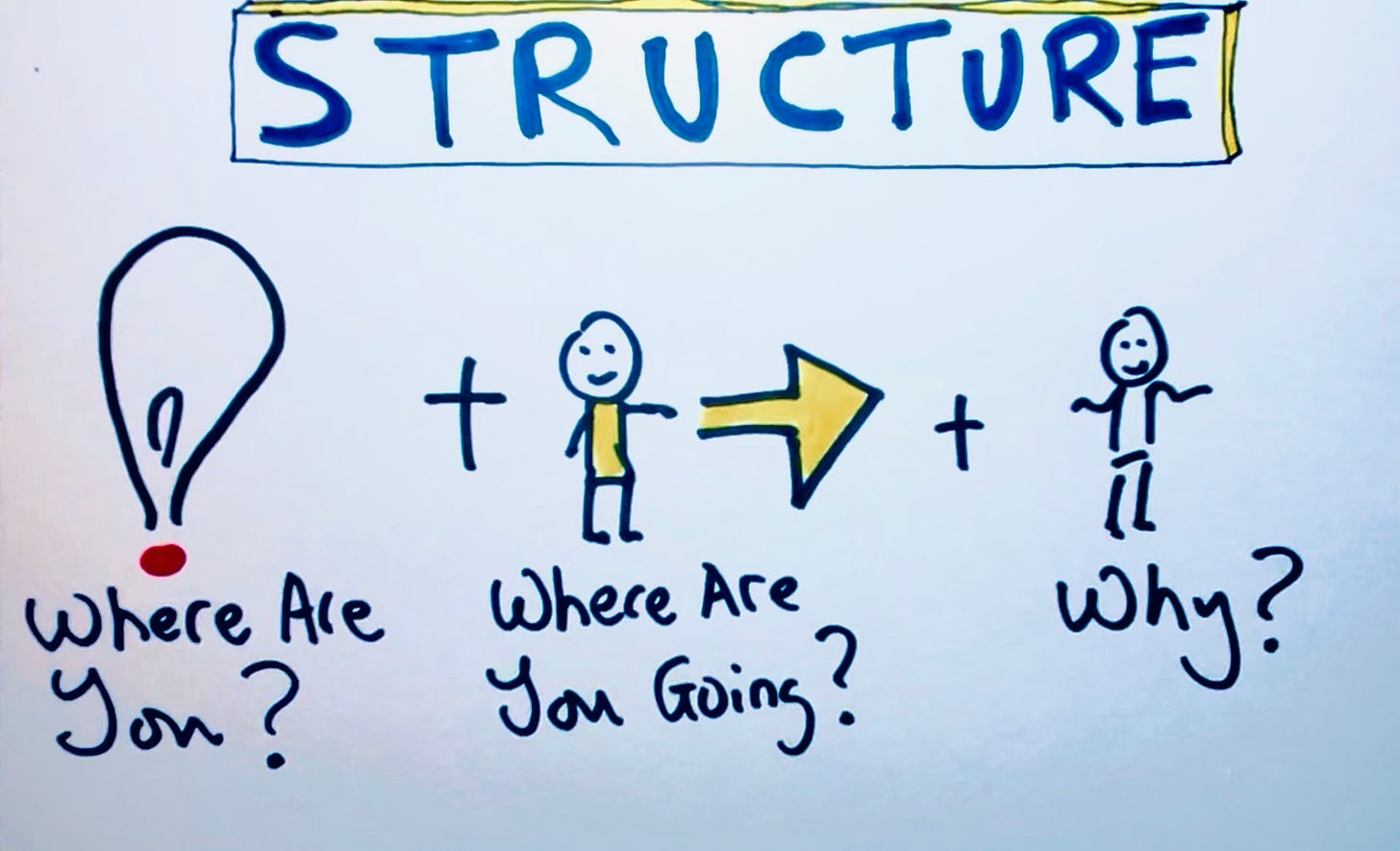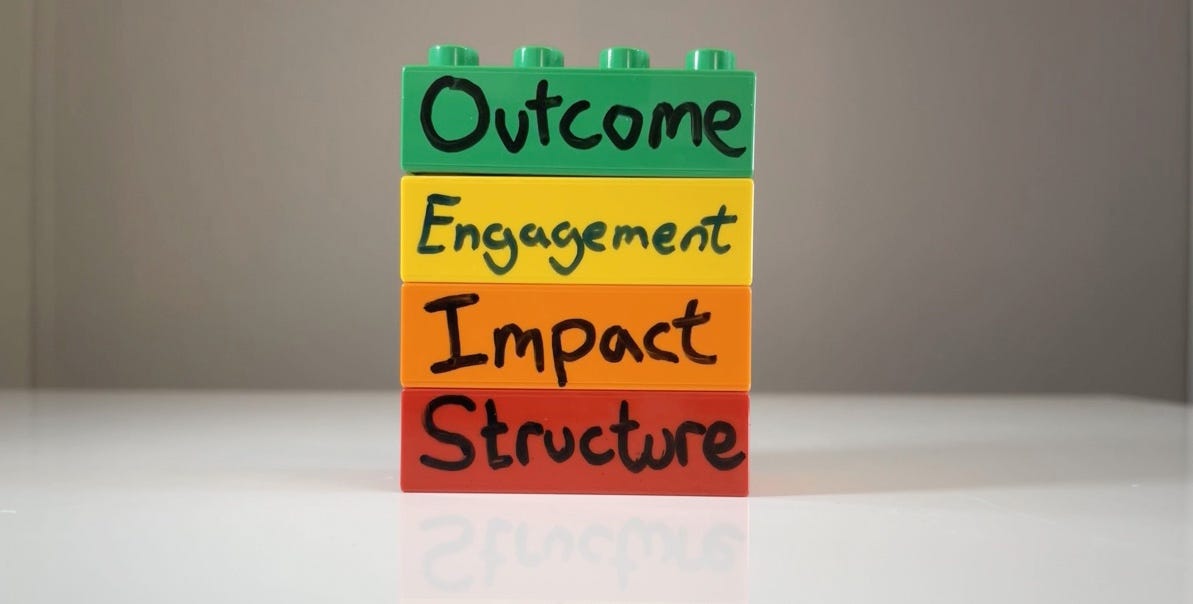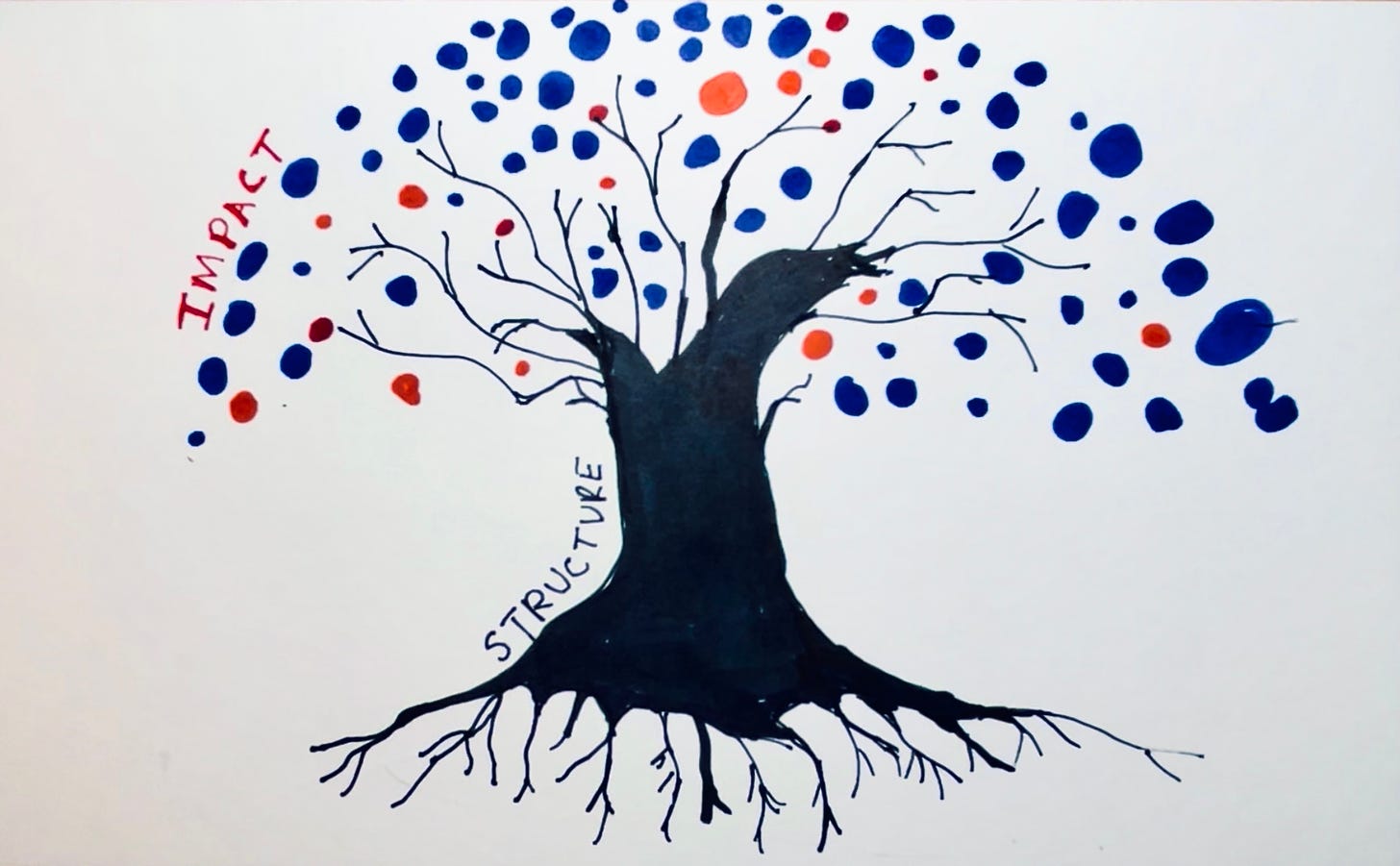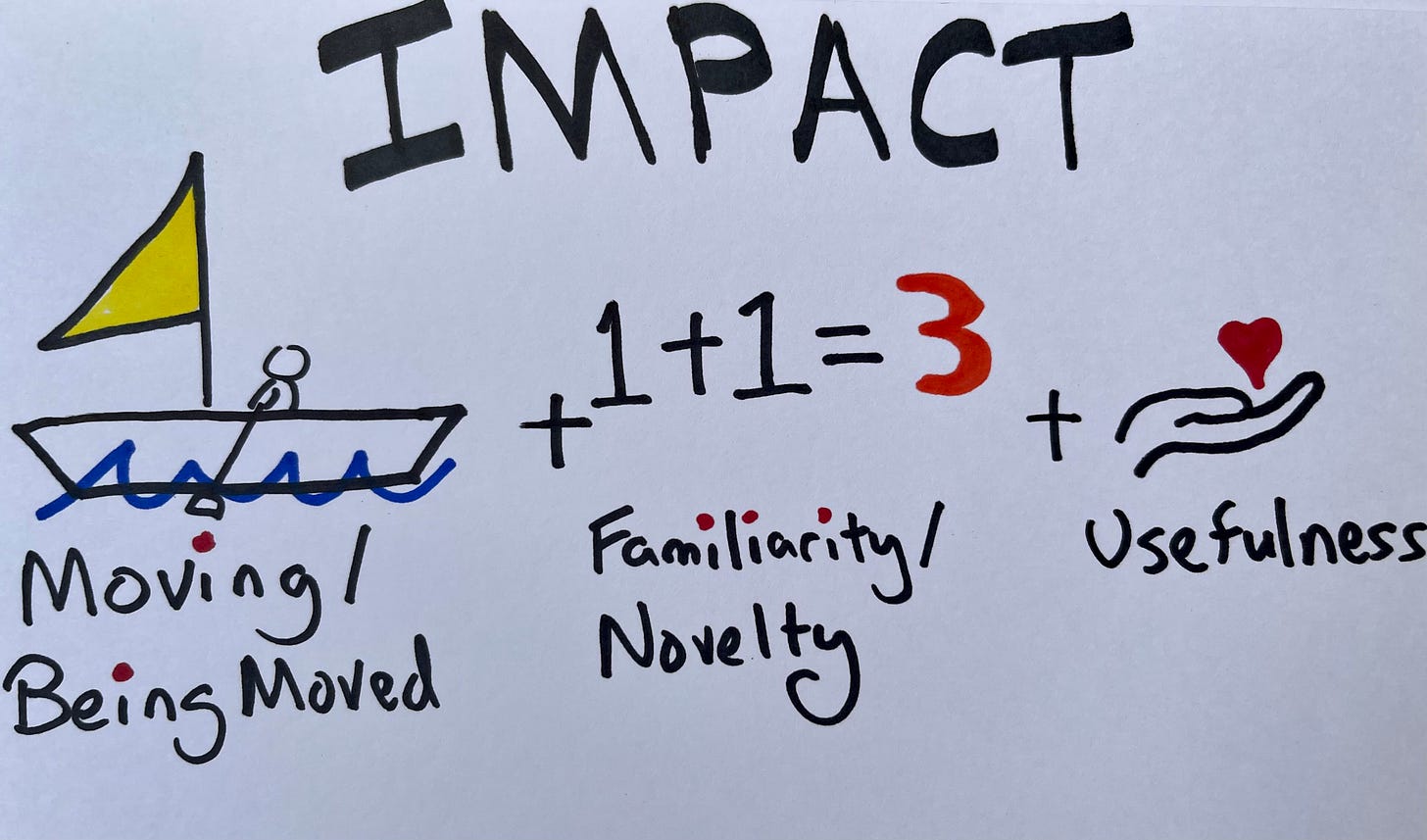Note: This is originally from Frontier Friday, a weekly Substack published, originally released on 01 Dec. 2023
1. Why Structure your sessions? You mean we shouldn’t follow the lead from our clients?
We tend to conflate between structure and models. Models can provide a sense of structure, but structure need not be confined to restricting ourselves to particular approaches.
Structure provides us so much as a not a formula, but a form—a scaffold to help us grow a meaning conversational experience in the session.
When we just “go with the flow” without a sense of directionality, you run the risk of getting lost. In turn, this creates a meandering experience for the client, and thus, more likely for them to disengage from treatment.
Here’s how I think about structure. There are 3 Parts:

Finally, from a hierarchical perspective, Structure is the bones for impact, leading to engagement, and ultimately moving the needle on outcome.

For more about this, see this post.
2. What does structure got to do with creating impact?
When we have a structural foundation for the therapy hour, we increase the odds of creating a moving, emotional impact.
Much like a tree.

When we don’t think about the inner experience from our client’s perspective, we run the risk of a conversation sounding no different from a chat. A therapeutic conversation needs the warmth from a friendly conversation, but it also needs to be therapeutically fruitful. It needs the spaciousness to help the client speak the less spoken about, i.e., what they “will say, won’t say, and can’t say.”
In short, the conversation needs to go deeper.
Here’s how I think about impact:

For more about this, see this post, Deconstructing Impact.
3. Are you actually giving us another model of therapy?
I sure hope not!
I’m much more interested in helping you develop your way of doing therapy. This course is a scaffold to help you do just that.
What do builders do with scaffold once the house is built? They tear down the scaffold.
4. I’m working on sooo many other aspects of my craft as a therapist, and I’m fearful of being overwhelmed by more content.
This is a valid concern.
It’s a common refrain I hear from highly motivated therapists around the world.
Here’s my response in the Frontiers Friday podcast episode on “What do I do?!“
If this might not be the right time for you… this might not be the right time for you.
The last thing I want is to add to your overwhelm. The next cohort might open for another couple of months.
5. The holidays are around the corner. I’m interested in the course but I won’t be around during this festive season.
As we say in Down Under, no worries mate!
Instead of a recording of a lecture, this course is specifically designed for online-learning, with 4 Sections dispatched each week.
Structure and Impact is a hybrid of cohort-based and self-paced learning. This means that you get to learn together with me and other practitioners from the world over, as well as the wiggle-room to go through the entire course at your own-pace. You can dip your toes back into specific sections at any point, and interact the rest.
It’s not subscription-based; it’s a LIFETIME access. So take all the time you need to go through the content
If you would like to learn more topics that can help your professional development, subscribe to the Frontiers of Psychotherapist Development (FPD). On Frontiers Friday (FPD), we serve you directly to your Inbox highly curated recommendations each week.



Recent Comments